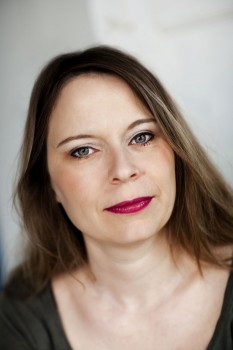Opera of the everyday
5 November 2010 | Reviews
A plaza in Seville suddenly turns into a modern shopping mall in the new collection of poetry by Saila Susiluoto (born 1971). In Carmen (Otava, 2010) Susiluoto combines the elements of Georges Bizet’s eponymous 1875 opera – popular folk tradition and intense emotions.
The Carmen of these poems is a gypsy, a stranger, a femme fatale, a fiery augury of death. These terse poems combine a narrative continuum, a love story, the triangle drama of the opera, and Susiluoto’s own, distinctive visually flowing style, which is both fresh and familiar.
Her debut collection Siivekkäät ja Hännäkkäät (‘The Winged and the Tailed’, 2001) seems to exist within the frame of a narrative painting or a film. In this suburban story of human relations, she is both an individual growing in passions and her lover’s deserter.
Huoneiden kirja (‘The book of rooms’, 2003) depicts the poet’s yearning journey of self-discovery. The mythical and fantastical character of Susiluoto’s poetry continues on its trajectory across the boundaries of time and place in her subsequent collections Auringonkierto (‘The orbit of the sun’, 2005) and Missä leikki loppuu (‘Where playing ends’, 2007).
In Carmen, Mikaela, the more conventional of two women is looking for her husband Jose ‘amidst the noisy din of pop’. Carmen ‘falls down the mall steps in her sequined dress’. ‘Welcome! welcome! welcome!’ Carmen seduces Jose; a lyrical, dance-like rhythm moves in a suggestive series of images. Streams of words sound like wild music in the dark light or hailstones in the gloomy sunshine.
The beat of the opera glides along the streets. Character names and other operatic references are loosely related to their model, as does the fact that the poems at these intersections are fantastical yet very much down to earth. The characters are searching for a place, a reality, another person or a way out of the jungle that is the mall.
As a true realist, Bizet is the perfect starting point, given that the dynamics of events are of crucial importance and that poetry wrenches itself free from bland lyrical musings. The brutality of everyday life shatters the idyll or, merging with it, subsumes it. Sing-song, rhymes, repetitions, typographical effects or the deliberately absurd use of language all come together in a highly idiosyncratic display of linguistic fireworks. Humanity and machinery spin together in a great Ferris wheel; flamenco, dance, schlager, spells, recitative, prayer.
Verse poems and prose poems place the vestiges of tradition in a modernist context. Tradition, in the form of opera choruses, echoes the sounds of modern suburbia wherever we hear the thirst for love, the thirst for security, for freedom – and violence. Carmen speaks through an online machine translator; Carmen is a singer of folksy lullabies.
The reader is left with an impressive palette of references brought about by the intense expression in Carmen – a realistic gash in the heart of our emotions.
Translated by David Hackston
Tags: poetry
No comments for this entry yet

